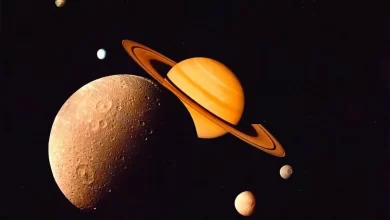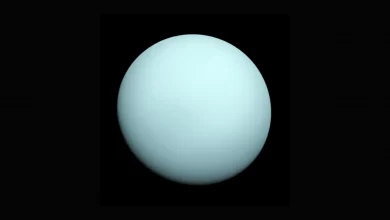Europa is one of Jupiter’s fascinating moons, known for its icy surface and the potential for a subsurface ocean of liquid water. Discovered by Galileo Galilei in 1610, Europa has captured the curiosity of scientists and astronomers for its potential to harbor extraterrestrial life. The moon’s smooth, cracked surface suggests recent geological activity, possibly driven by tidal forces from Jupiter’s immense gravitational pull. Europa remains a key target for future space exploration missions, including the search for signs of life in its subsurface ocean, making it a captivating subject in the study of our solar system’s intriguing celestial bodies.
- Europa is primarily composed of rock and is covered by a thick layer of ice. In fact, it has one of the smoothest and brightest surfaces of any object in our solar system.
- Beneath its icy exterior, Europa is believed to have a subsurface ocean of liquid water. This ocean is considered one of the most promising places to search for extraterrestrial life within our solar system.
- The heat necessary to keep Europa’s subsurface ocean in a liquid state likely comes from tidal heating. The gravitational interactions between Europa, Jupiter, and its neighboring moons cause flexing and stretching, generating heat.
- Europa’s subsurface ocean, which may contain more water than all of Earth‘s oceans combined, makes it an enticing target for astrobiology missions. Scientists speculate that life could potentially exist in the ocean’s dark, hidden depths.
- Europa’s surface is marked by a network of cracks, ridges, and chaos terrains, suggesting recent geological activity. The ice is thought to be constantly shifting, driven by the tidal forces and the presence of liquid water beneath.
- The Galileo spacecraft, which explored the Jupiter system from 1995 to 2003, provided valuable data about Europa. It revealed evidence of a subsurface ocean and helped raise interest in future missions to the moon.
- NASA’s Europa Clipper mission is planned for the 2024. This spacecraft will conduct detailed observations of Europa, including studying its ice shell, subsurface ocean, and potential habitability.
- Europa experiences intense radiation from Jupiter’s powerful magnetosphere, making its surface a challenging environment for exploration.
- Observations by the Hubble Space Telescope have hinted at the existence of water vapor plumes erupting from Europa’s surface. These plumes could provide a way to study the composition of the moon’s subsurface ocean without landing on the surface.
- Europa’s surface contains reddish-brown streaks that scientists believe may be the result of irradiated salts or minerals from the subsurface ocean.
- Europa’s surface appears relatively young, with few impact craters, suggesting that it has been resurfaced relatively recently in geological terms.
- Europa is approximately the same size as Earth’s moon, with a diameter of about 1,940 miles (3,100 kilometers).
- Europa is one of Jupiter’s four largest moons, known as the Galilean moons, along with Io, Ganymede, and Callisto. It orbits Jupiter at a distance of about 414,000 miles (670,900 kilometers).
- Surface temperatures on Europa can plummet to around minus 370 degrees Fahrenheit (minus 223 degrees Celsius), making it one of the coldest objects in our solar system.
- The ice on Europa could potentially be a valuable resource for future space exploration. It could be used for drinking water or converted into hydrogen and oxygen for rocket fuel.
- Europa has a weak magnetic field, which is likely generated by the subsurface ocean’s interaction with Jupiter’s powerful magnetic field.
- Dark, reddish-brown spots and streaks on Europa’s surface, like those found on the moon Ganymede, remain a subject of scientific study and speculation.
- Europa’s potential for life and mysterious oceans have inspired numerous works of science fiction literature and films, including Arthur C. Clarke’s novel “2010: Odyssey Two.”
- Any potential mission to Europa would need to incorporate strong radiation shielding to protect spacecraft and instruments from the harmful effects of Jupiter’s radiation belts.
- Europa’s exploration has garnered international interest, with the European Space Agency (ESA) and other space agencies considering future missions to study this fascinating moon.





